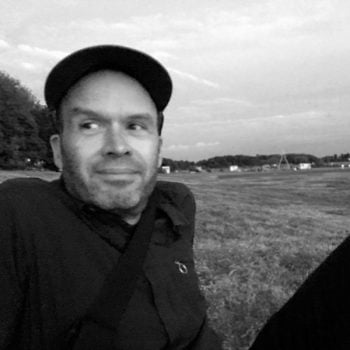925,000 Campsites The Commodification of the American Experience
925,000 Campsites The Commodification of the American Experience
Oct 30, 2014 to Nov 20, 2014
Location: Huntley University Art GalleryPress the tab key to view the content. Use the down arrow key to move to the next tab and up arrow key to move to the previous.
 There is a satisfying immediacy about the prospect of establishing an encampment for the night—clearing the site, erecting the tent, chopping wood, building a fire and cooking over the live flame—that in turn suggests a meaningful connection to landscape, place, and the rugged life of backwoods adventurers. At its essence camping is an act of faith and survival, a way to buttress an isolated human settlement against the forces of nature. Situated “somewhere between challenging new circumstances and the safe reassurances of familiarity,” the camp is a temporary substitute for the home—a place to dwell, to sleep, to interact socially, to prepare and eat food.2 Stripped of any but the most vital conveniences, the camp is literally and figuratively open to the stimuli of its natural surroundings.
There is a satisfying immediacy about the prospect of establishing an encampment for the night—clearing the site, erecting the tent, chopping wood, building a fire and cooking over the live flame—that in turn suggests a meaningful connection to landscape, place, and the rugged life of backwoods adventurers. At its essence camping is an act of faith and survival, a way to buttress an isolated human settlement against the forces of nature. Situated “somewhere between challenging new circumstances and the safe reassurances of familiarity,” the camp is a temporary substitute for the home—a place to dwell, to sleep, to interact socially, to prepare and eat food.2 Stripped of any but the most vital conveniences, the camp is literally and figuratively open to the stimuli of its natural surroundings.
Each summer millions of Americans take to the open road in search of this powerful experience of nature. Campgrounds all across the country commodify the locus of this singular experience into multiple sites. That parcel of land upon which most elect to park their car, trailer, camper, or RV is thus not only an imagined ideal: as the exhibit title suggests, there are nearly 1 million campsites across the country, dispersed across an estimated 14,000 campgrounds.3 In 2010, Kampgrounds of America—KOA, familiarly—alone reported a total consumption of over five million campsite-nights, as well as 1.5 million hits monthly on its website.4 Demand for sites remains so high that would-be campers reportedly turn to Craigslist to purchase campsite usage at popular destinations like Yosemite National Park during busy holiday weekends, and this at three or four times their original price.5 Further, the record sales reported by sporting utility stores like REI and EMS owe largely to successful retailing efforts to associate their equipment with the out-of-doors and the prospect of healthy living. For many urbanites, high-performance gear like hiking boots and mountaineering vests have even become staples of everyday casual chic.
Modern campgrounds are replete with delightful irony. Each “lone” campsite functions as a stage upon which cultural fantasies can be performed in full view of an audience of fellow campers interested in much the same “wilderness” experience. For artist Robert Smithson, whose sensitivities to site and site-making were informed by the childhood family camping trips he helped organize, the campsite was where one could reenact the making of a place.6 Who in the camping community has not experienced a degree of gear envy at the sight, at a neighboring campsite, of a brand new Primus Gravity II EasyFuel stove (with piezo ignition), a Sierra Designs tent, or a Marmot sleeping bag? KOA even leases some permanently parked Airstream trailers, so that campers can spend the night in a cultural icon;7 this experiment allows prospective visitors to show up without any personal equipment, just as they would at a roadside motel. No wonder that the daily repetition of chores once associated with survival has now been so fully recast as a series of almost spiritual rituals intended to reconnect the camper with what has been largely lost; for by now most of the old necessities—hiking to and clearing the site, hunting for game, collecting water and firewood—have given way to such less arduous activities as parking the car, pitching cable-free pop tents, buying cold cuts at the campground store, hooking up electrical and sewerage conduits, setting up patio chairs, etc. Serviced by networks of infrastructure and populated with trailers and $300,000 RVs, campgrounds celebrate a unique form of American ingenuity in which intersecting narratives and desires (wilderness, individuality, access, speed, comfort, nostalgia, profit) have become strangely and powerfully hybridized.
To tell the story of the commodification of camping is not to tell the story of any one site or even any one campground, but rather to examine how this cultural ideal of rugged American character came to be appropriated and transformed into widely replicated templates and generic spatial protocols. It is to talk not only about campers but also about the crucial role of motor vehicles in shaping this narrative, which begins rather innocuously with early twentieth-century roadside bivouacs and culminates in today’s tightly organized loops of dedicated plots. Tracing the historical arc that connects late nineteenth century recreational campers to the Adirondacks with overnighting RVers in a Walmart parking lot, this exhibit puts forth four key themes (1. Campsite: functions as the standard the unit of management of any campground; 2. Geography: examines camping destinations ranging from Yosemite National Park to the KOA on the Las Vegas Strip; 3. Services: the wide array of utilities that service modern campgrounds; 4. Operation: the organization of campgrounds into national systems) that are key to measuring the radical physical and cultural transformations of the campground in the past century. Taken together, these form a coherent basis to this fascinating temporal narrative.
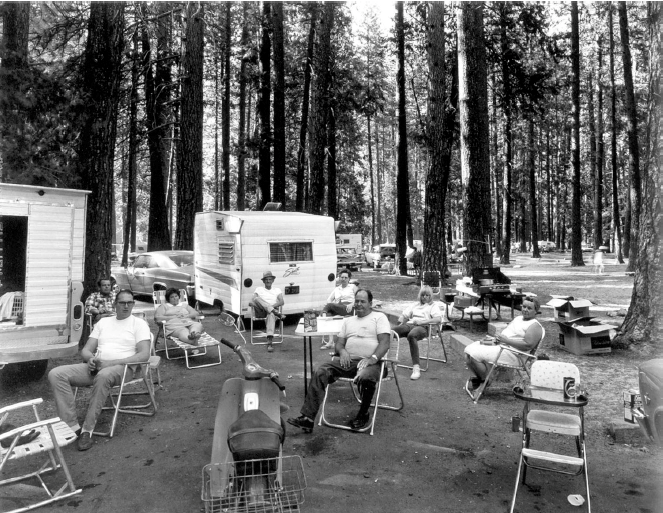
Photo Caption: Photo from part of 925,000 Campsites The Commodification of the American Experience Installation
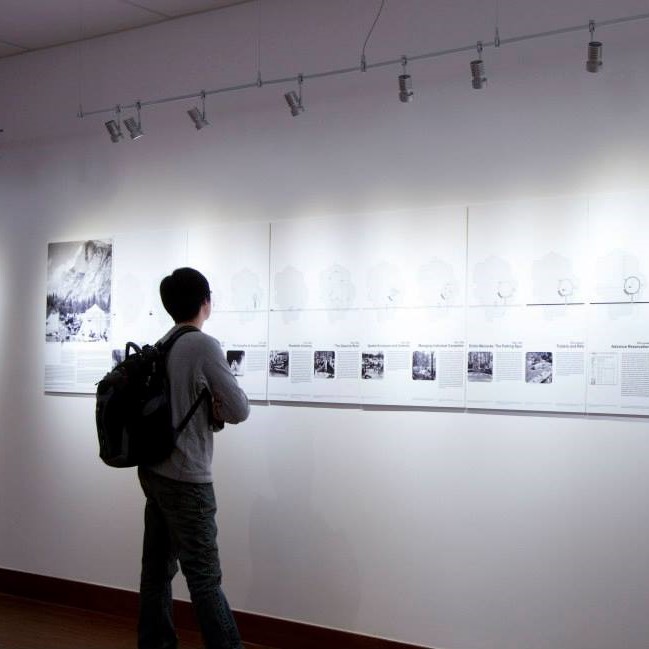 Saturday, August 25, 2018 - 3:00pm to 6:00pm
Saturday, August 25, 2018 - 3:00pm to 6:00pm
Opening Reception:
925,000 Campsites
To tell the story of the commodification of camping is not to tell the story of anyone site or even anyone campground, but rather to examine how this cultural ideal of rugged American character came to be appropriated and transformed into widely replicated templates and generic spatial protocols.
Martin Hogue
Martin Hogue is the William Munsey Kennedy Jr. Fellow at the State University of New York’s Department of Landscape Architecture in the College of Environmental Science and Forestry, where has worked since 2010. Trained as an architect and landscape architect, and working primarily with analytical drawings as a mode of inquiry, his research explores the notion of "site" as a cultural construction—specifically, the mechanisms by which locations become invested with the unique potential to acquire the designation of site. Hogue's most recent work, which centers around camping culture in the United States, interrogates the discrepancies that exist between the deeply cherished American ideal of ruggedness and independence and the desire for an increasingly sophisticated range of utilities and conveniences. Campgrounds indeed commodify into multiple sites — literally tens of thousands of them across the United States — the locus of this singular experience. Each “lone” campsite functions as a stage upon which cultural fantasies can be performed in full view of an audience of fellow campers interested in much the “wilderness” experience. In [Fake] Fake Estates, completed in 2006, Hogue proposes a new take on Gordon Matta-Clark’s seminal 1975 Fake Estates project, in which the artist purchased and later documented 14 residual land parcels at auction in Queens for $25 each (a 2.33’ x 355’ long strip of land, a 1.83’ x 1.11’ lot, among others). This project is one of many (Landing Strip, The Site as Project, etc.) that pays tribute to 1960s and 1970s conceptual artists such as Matta-Clark, Robert Smithson, and Walter De Maria, whose site explorations form the basis of contemporary speculation in his work. Hogue’s research has been supported with residencies at the MacDowell Colony (2005), the Center for Land Use Interpretation (2006), the Canadian Center for Architecture (2009), and the University of Nebraska, where he was appointed Hyde Chair in 2004. His work has appeared in 306090, Architecture-Québec, Bracket, Dichotomy, Ground Magazine, Landscape Journal, Numéro, Pidgin, Places, Thresholds, and the Journal of Architectural Education. His 2003 photographs of Robert Smithson’s Spiral Jetty have appeared in Bookforum, Numéro, as well as two monographs on the work of the artist published by the Dia Art Foundation and the Museum of Contemporary Art in Los Angeles. Hogue's work has been displayed in solo exhibits at over 20 venues across the United States, including The Ohio State University, Cornell University, the Urban Center in New York and the Center for Land Use Interpretation.
Photo Caption: Photo of Martin Hogue
Gallery Views
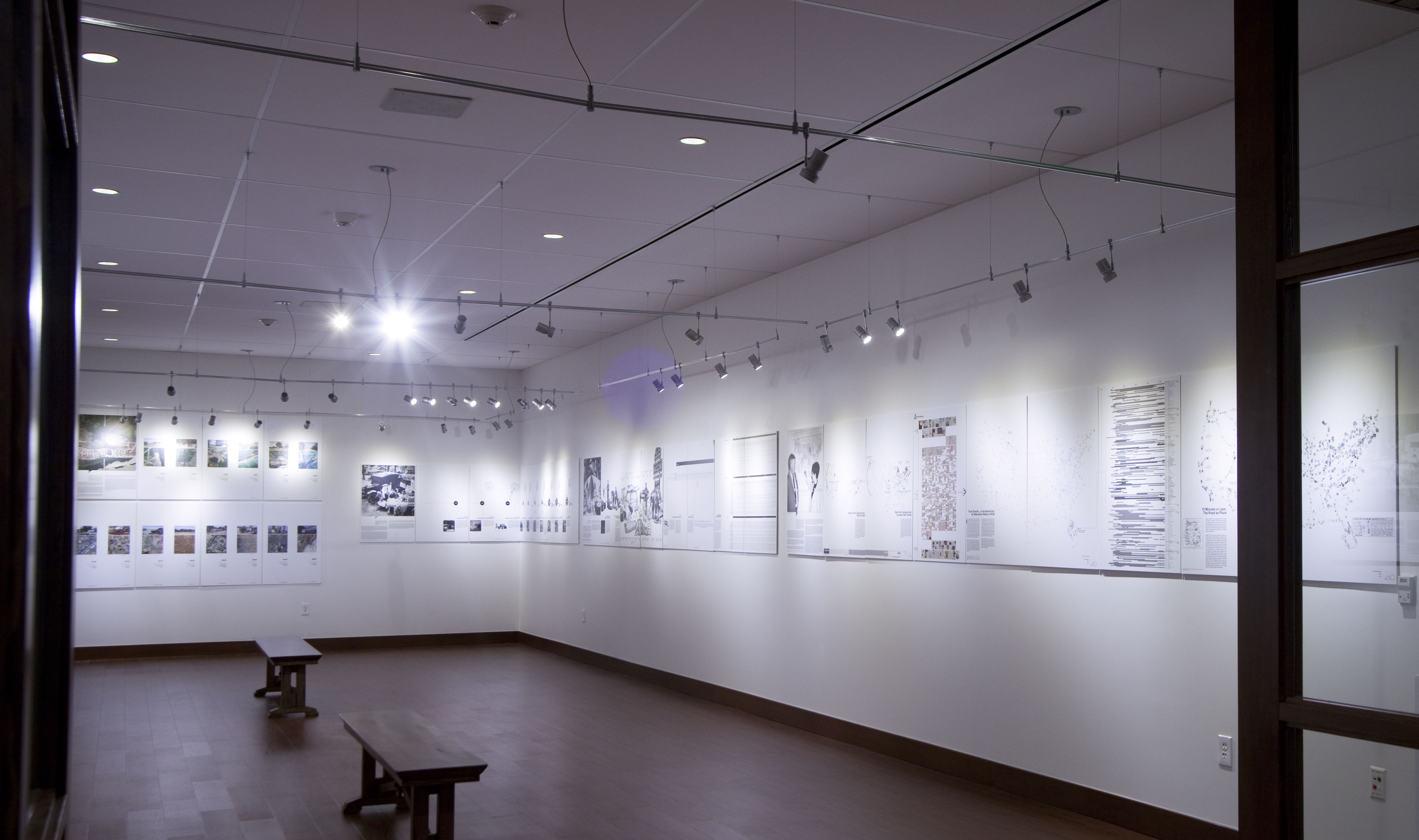 Installation View, Front of Gallery, 925,000 Campsites The Commodification of the American Experience Exhibition, 2014.
Installation View, Front of Gallery, 925,000 Campsites The Commodification of the American Experience Exhibition, 2014.
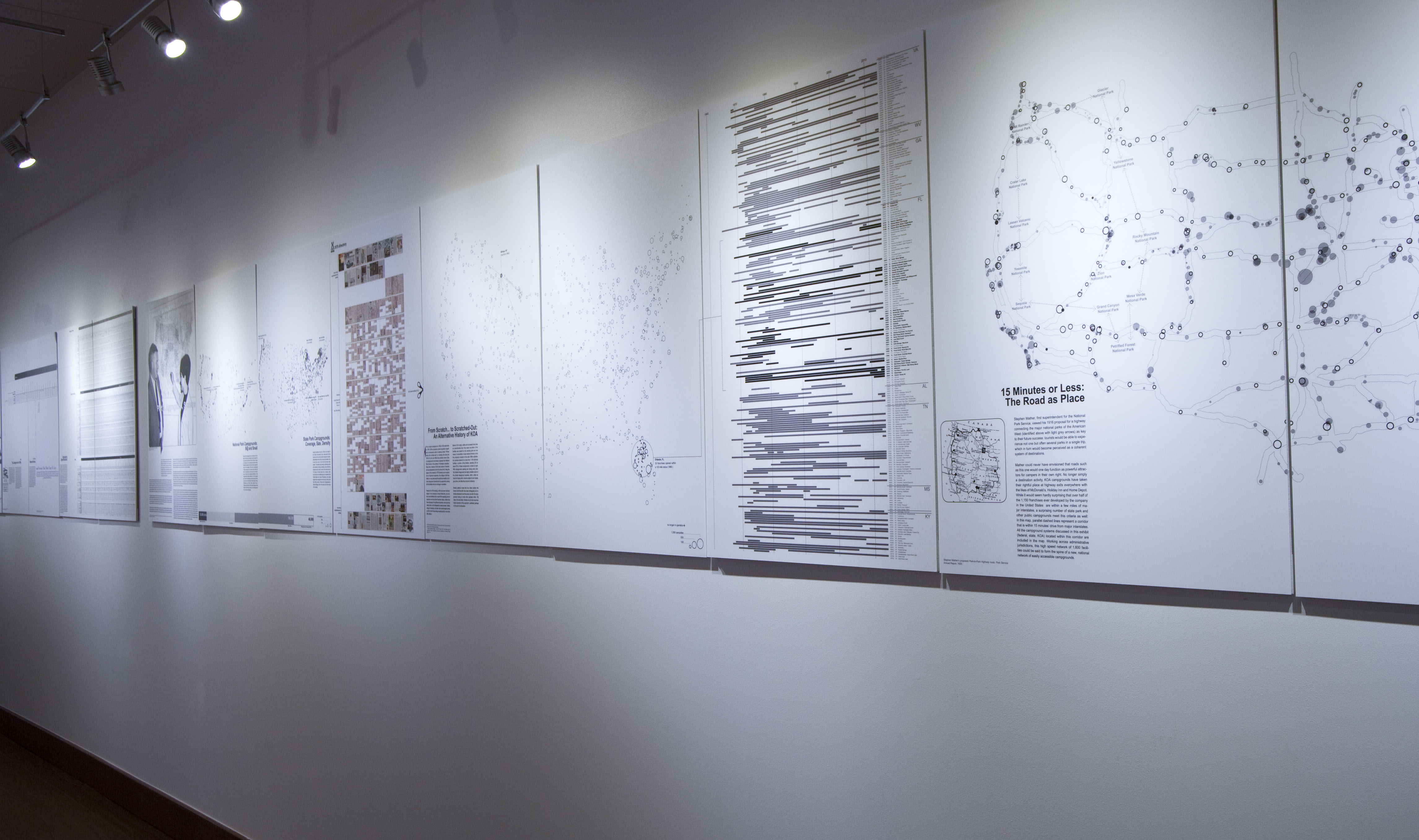 Installation View, Front of Gallery, 925,000 Campsites The Commodification of the American Experience Exhibition, 2014.
Installation View, Front of Gallery, 925,000 Campsites The Commodification of the American Experience Exhibition, 2014.
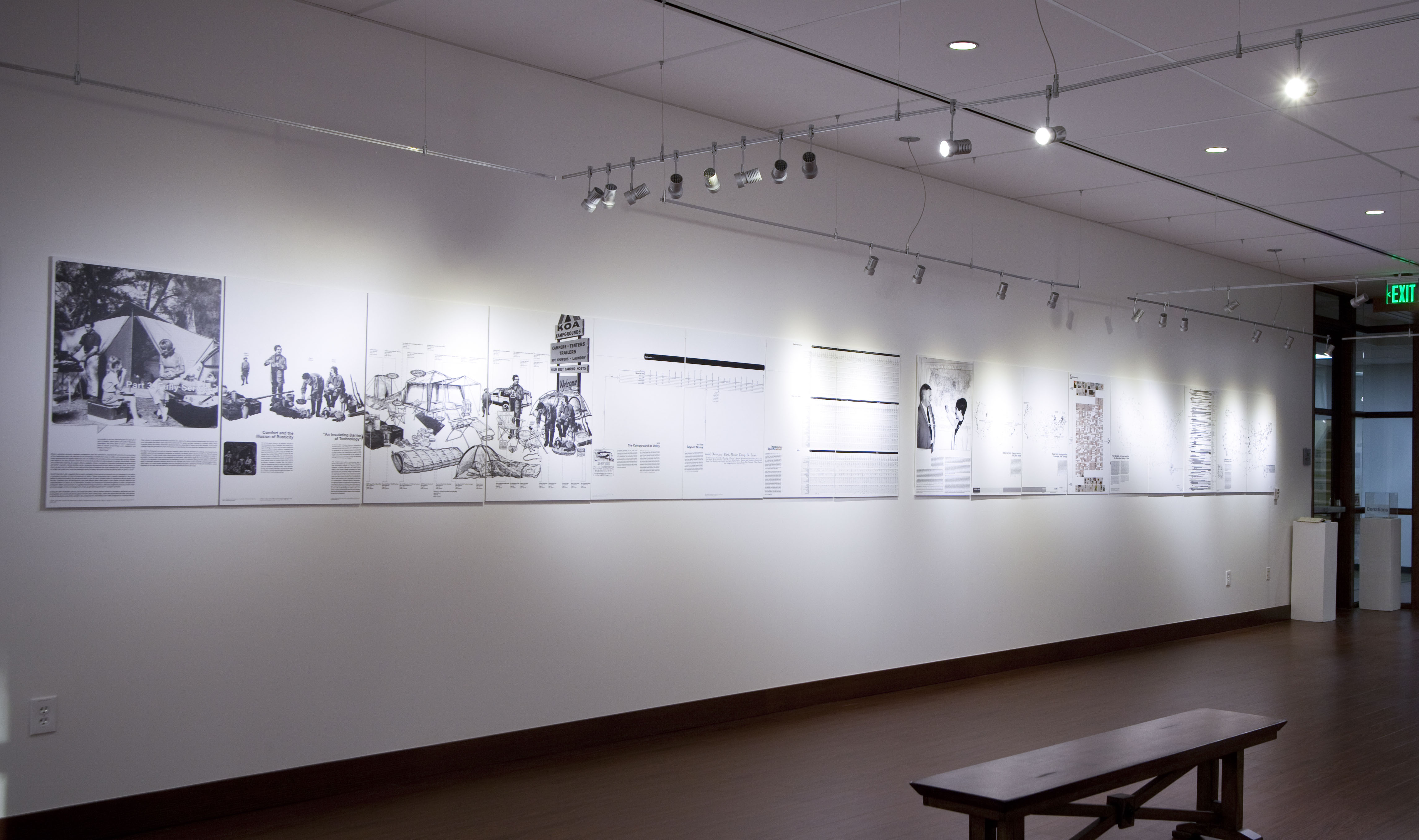 Installation View, Front of Gallery, 925,000 Campsites The Commodification of the American Experience Exhibition, 2014.
Installation View, Front of Gallery, 925,000 Campsites The Commodification of the American Experience Exhibition, 2014.
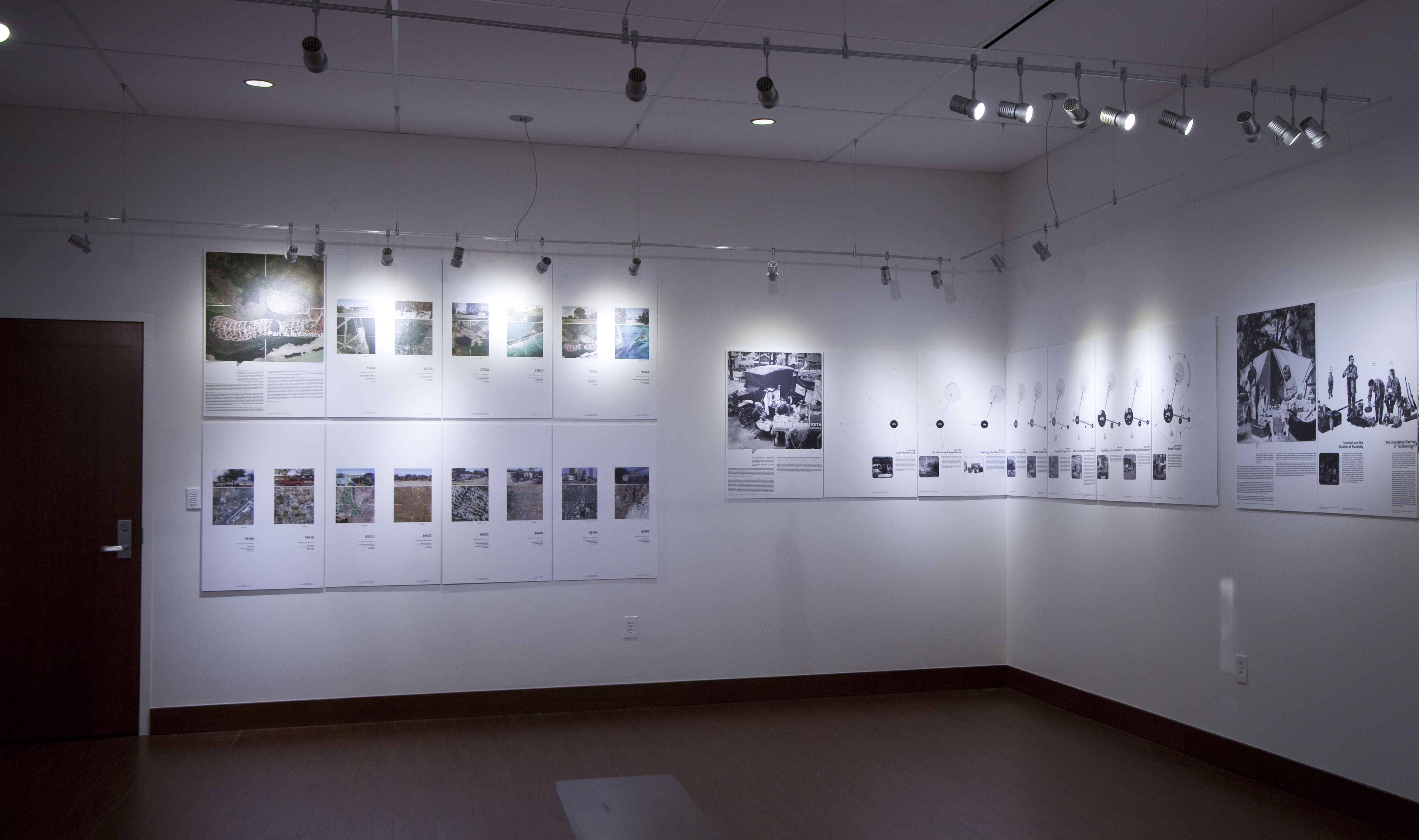 Installation View, Front of Gallery, 925,000 Campsites The Commodification of the American Experience Exhibition, 2014.
Installation View, Front of Gallery, 925,000 Campsites The Commodification of the American Experience Exhibition, 2014.
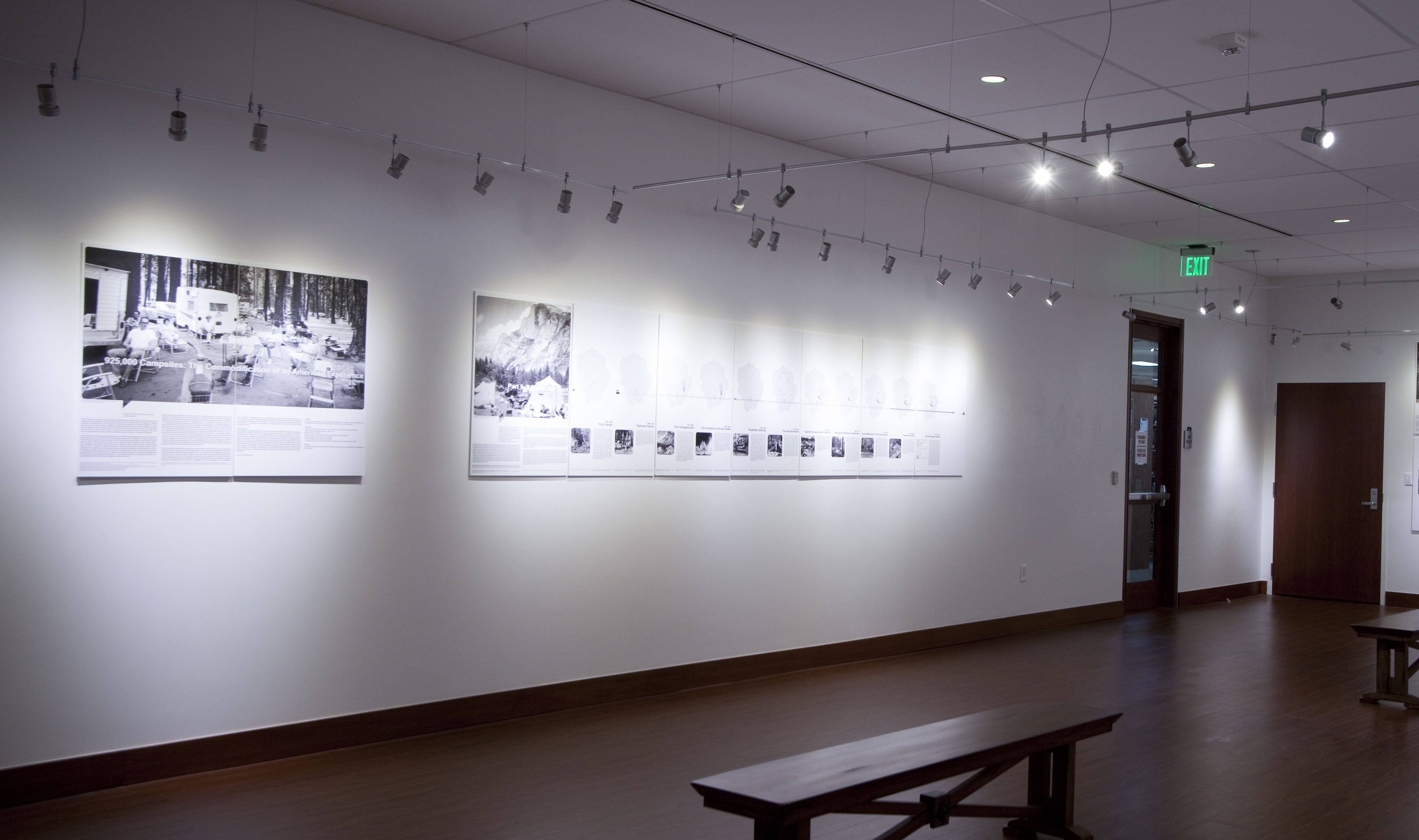 Installation View, Front of Gallery, 925,000 Campsites The Commodification of the American Experience Exhibition, 2014.
Installation View, Front of Gallery, 925,000 Campsites The Commodification of the American Experience Exhibition, 2014.
